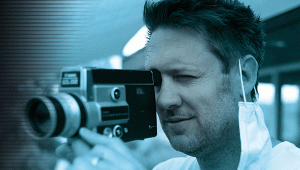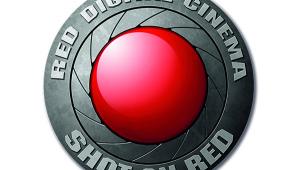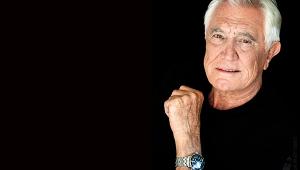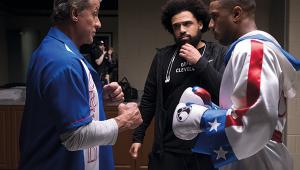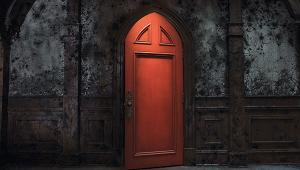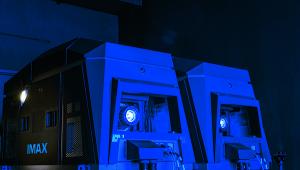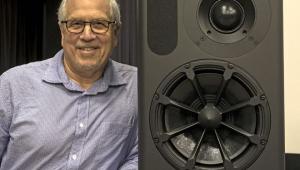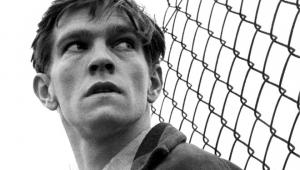I'm just not interested in violence or gore...
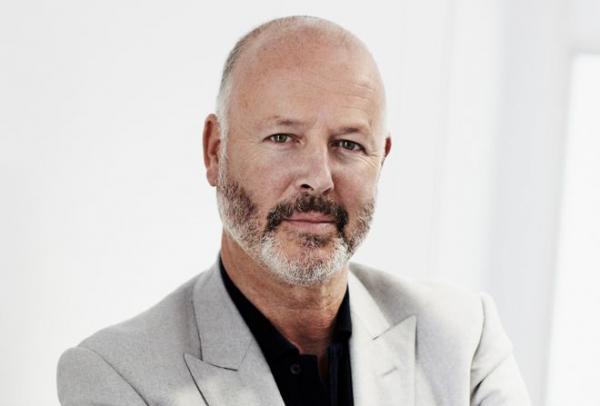
Hammer Films is a studio reborn. The British film icon, which enjoyed worldwide success in the 1950s, '60s and '70s with a swathe of fright flicks and launched the careers of Christopher Lee and Peter Cushing among others, had seemed to be dead and buried by the mid-80s, with production ceasing completely. Yet since 2007, under the guidance of CEO Simon Oakes, Hammer is back in the limelight, chilling new audiences first with an innovative web-based horror series and then a blockbusting – and controversial – adaptation of Susan Hill's The Woman in Black. Its latest movie, The Quiet Ones, is out now on Blu-ray/DVD.
Anton van Beek caught up with Hammer Films CEO and President Simon Oakes to chat about The Quiet Ones, leaving Dracula in his coffin, and why there's more to the studio than blood and guts...
Let’s start with Hammer’s most recent film, The Quiet Ones – which has a truly astonishing performance from young English actress Olivia Cooke...
Yeah, it’s a great film. It didn’t perform as well as we hoped at the box office – I shouldn’t say that in the middle of an interview! – but I still think it’s really terrific. As for Olivia, if I say we 'lucked-out' it sounds like nothing is ever planned, but she almost walked in off the street and is now on her way to becoming a genuine star. It was her first film role and since then she’s never stopped; her feet haven’t touched the ground. She’s so talented. The rest of the cast is great as well. I think Sam [Clafin] got The Hunger Games on the last day of filming, which was amazing.
You mentioned the film’s box office performance. How do you weigh the importance of cinema versus home entertainment?
For me theatrical is the priority, because I think it all then leads from there. I’m a producer and financier, not a distributor, but I hope a distributor would agree with me. There were the days when you could do straight-to-video and straight-to-DVD releases and it wouldn’t matter. But I think that the plethora of product and platforms today means having theatrical visibility is critical.
That said, the film does not have to do unbelievably well at the box office; it can have a level of awareness, a level of marketing that then helps it in the secondary and third markets. Awareness is everything. If you travel as much as I do and look at the list of movies on airplanes, I’m always attracted to those that I know have been theatrically released and that for one reason or another I’ve not got around to seeing them.
Hammer’s tradition is about the theatrical release – because in its heyday there was no such thing as DVD and I think there was one television channel! And if you look at the actors we’ve worked with since we started, whether it be Hilary Swank and Chloë Grace Moretz in America, or Daniel Radcliffe, Ciarán Hinds, Helen McCrory, Jared Harris and Olivia Cooke over here, you’re going to attract them to a script, to a project, if they know it’s going to be theatrically released.
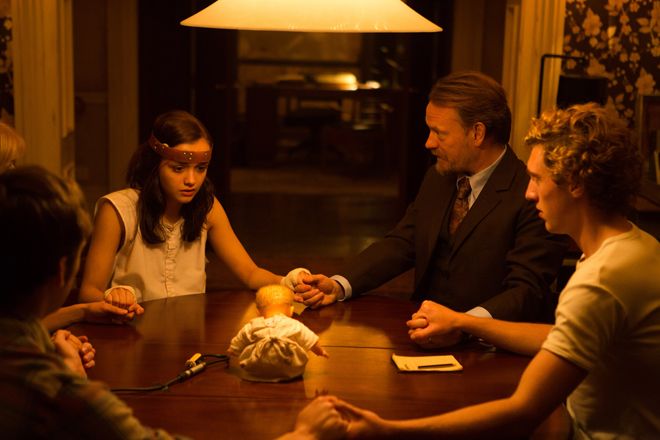
Does Hammer’s brand legacy help in attracting that sort of calibre of talent to the genre?
I think it’s a double-edged sword, but it’s our job to make sure that is the case. When Daniel Radcliffe said it was great to be part of the rebirth of Hammer, he was saying that on the basis of having read a script that he loved, with a part he wanted to play and a director he wanted to work with. Nobody is going to walk in and say that just because it’s Hammer they’ll do it. So it’s key to set out the parameters of what we’ll do and what we won’t do, what we think our brand is about in terms of the types of movies we make. But I do think that there’s genuinely a willingness and desire to be part of it, which is great.
Have all of the projects so far been generated in-house?
Yes, we generate everything in-house. There’s one example where it wasn’t and that was Wake Wood. But in that instance the script came to us as a very, very early first draft and we worked really heavily on its development. But with everything else we’ve done – Let Me In, The Resident, The Woman in Black, The Quiet Ones, the sequel to The Woman in Black – our whole aim is to develop everything in-house. Because the reality is that the type of scripts we get sent 'on spec' tend to be on the gory, exploitative side and we’re just not interested in that.
That’s interesting, because back in its heyday Hammer was frequently pushing at the boundaries of censorship.
I think it’s just different. If you’re talking about something like Dracula in 1957 it was a different world and the boundaries then were ready to be broken down. We’re also talking about a cultural change in the 1960s that altered people’s perceptions of what was acceptable and what wasn’t.
The reality is, I’m just not interested in violence and gore. It’s just not interesting to me. But that’s not to say that we aren’t pushing at boundaries. Psychological, unsettling storytelling is a great tradition in literature, art and cinema. I just don’t think that you need to get that point over by showing blood gushing out of arms that have just been cut off. Or by how many women you can kill by the end of the first reel...
I think there’s a place for violence. You know, contextually there’s a place for violence, but the great horror directors didn’t really need it. When you actually dissect those films very little is actually shown, instead it’s suggested – and I think that’s much more powerful.
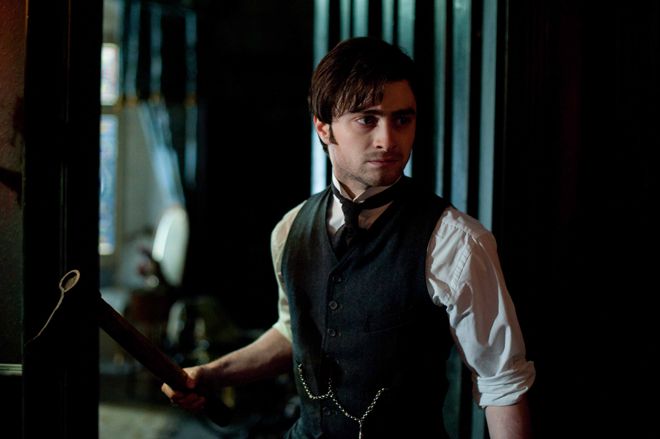
It must also be a help at the box office if you can open your film up to a wider audience by getting a lower age-rating from the BBFC. Just look at the success of The Woman in Black...
Yeah, The Woman in Black was a 12A, but I doubt we’ll get the same for the second one. Apparently it was the most complained about movie of 2012. To put that into context, there were five million admissions for The Woman in Black and there were 150 complaints. Go figure. It’s sort of silly, but there’s nothing we can do about it.
When you look at 12-year-olds and what they see in videogames – that’s much more violent. I guess the difference is that when you’ve got something that is emotionally and psychologically engaging like a movie, with real people and a sense of the whole thing being 'real', then the issue around violence and stuff like that has to be very careful. There’s almost a general consensus around games that there’s a sort of distance between the player and the game itself. So I don’t know where the BBFC are right now in terms of what they think is acceptable and what isn’t.
Looking back at the history of the company, why do you think the appeal of Hammer has endured for so long?
That’s a good question. I think it was a perfect storm in the late ‘50s and early ‘60s that seemed to mirror the breaking down of boundaries and taboos going on around the world and particularly in the UK. At the same time there was a huge influx of American movies and the UK film industry was pretty slow in terms of its output. There were some staggering directors around at that time, the ‘kitchen sink’ directors – and some amazing movies, but they were few and far between. Against that Hammer was making a movie every two months, so I think it was treasured by people and was somehow symbolic of that time.
I think that goes with a lot of British brands like Aston Martin, like Triumph, like Burberry; I think we have a sort of love affair with them because they may be a throwback to better times. So it’s true, we’ve never had anything other than support from people from the beginning. Obviously, you make a movie and critics will criticise it – as they should. They’ll like it or not like it or be indifferent. That’s the individual movies, though. In terms of Hammer overall, I think people are really pleased that we’ve brought it back.

Does that sense of nostalgia play back into the films you’re making, such as setting The Quiet Ones in the 1970s?
That’s not been a policy, it’s just been the way the material has gone. The whole idea behind setting The Quiet Ones in the ‘70s was as a homage to the urban myth movies that were coming out of America at the time. With The Woman in Black, the book was set in Edwardian times. But there’s a film we’ll be making towards the end of the year called Shomer, which I can’t tell you anything about other than the name, which is a contemporary piece.
What made Hammer’s resurrection viable in 2007 as opposed to all of the attempts that had been made before?
I guess it was sort of a man with a plan, you know. Another group of people acquired it in the mid-‘90s. They bought the catalogue and the name, the brand, but they didn’t have a strategy about what they were going to do because they weren’t filmmakers and they hadn’t raised any production finance. They were focusing a little too much on the back catalogue.
We haven’t done that. We’re not going to do that because that was then and this is now and the rights are very complicated, anyway, in terms of ownership. We’ve got like seven Dracula movies, but anybody can do a Dracula, as is well evidenced.
I had a plan about what the brand would be and how you’d revive it, and the production finance raised and ready to invest in movies – so that was the difference. We didn’t go around talking about what we would do, we just started developing and making pictures. We’ve now made six movies since we started, and we’re going to ramp up production to two-to-three pictures a year.
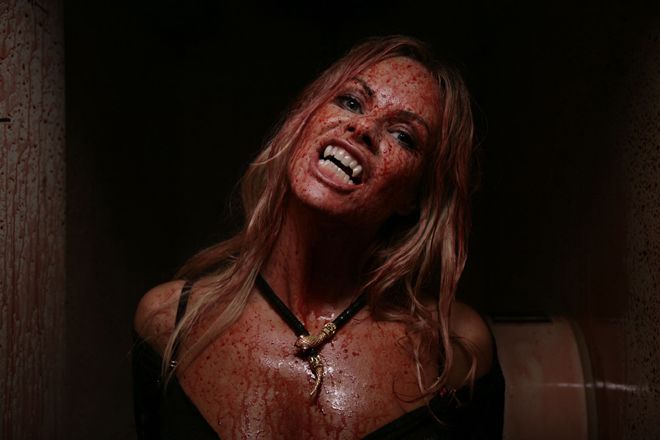
When Hammer returned in 2007 it’s first project was the web series Beyond the Rave. Given the proliferation of Smart TVs and streaming services since then, do you think it was ultimately ahead of its time?
I think it was. We also picked the wrong platform, because MySpace is no longer viable. But I think the idea was the right one. Where we perhaps misjudged the situation was the relationship between advertisers/sponsorship and the core demographic. Beyond the Rave was pretty out there in terms of sex and violence and drugs, and that was a pretty difficult place for sponsors to buy into. At the same time MySpace had a very unclear sense of where they wanted to be in terms of content.
However, we got a lot of PR by doing it. A lot of people who’d never heard of Hammer, and even those who had, could see that we were serious and were spending money. In a sense it was a very expensive marketing tool.
Right now we’ve got a Hammer YouTube channel, which we’re starting to populate. But what the market’s telling us is that long-form scripted programming works less well on platforms like YouTube than more factual, documentary-style programming. Netflix is different, it’s really a broadcaster. Nobody thinks they’re watching it on the internet, because they’re streaming it onto their TV. So you get people saying 'I like to watch Netflix.' But that doesn’t mean anything, it’s like saying 'I like to watch ITV'. It’s weird, but it’s clever.
In its original incarnation Hammer worked across multiple genres with sit-com spin-offs like On the Buses and adventure films such as One Million Years B.C. Are there any plans to branch out like that again, or is the reborn Hammer focused solely on horror?
Well I don’t use the word horror, hardly ever. I try to just call the company Hammer, but there’s no way around it so that people won’t make it synonymous with horror. I guess it depends on your view of it. Take The Woman in Black. Now I don’t consider that to be a horror movie. I consider it to be a psychological ghost story. I think that horror has been sort of purloined by the likes of the Saw and Hostel franchises, so I try not to use it very much.
I think our mantra is intense psychological storytelling. That doesn’t have to be horror, it can be Hitchcockian. We can also do monster movies. We can do sci-fi as well. In fact, we’re bringing Quatermass back to television. So I think it’s quite a broad spectrum. But we’re certainly not going to do the comedy stuff; that’s sort of weird. I don’t know how that happened, but it’s never going to happen at all on my watch.
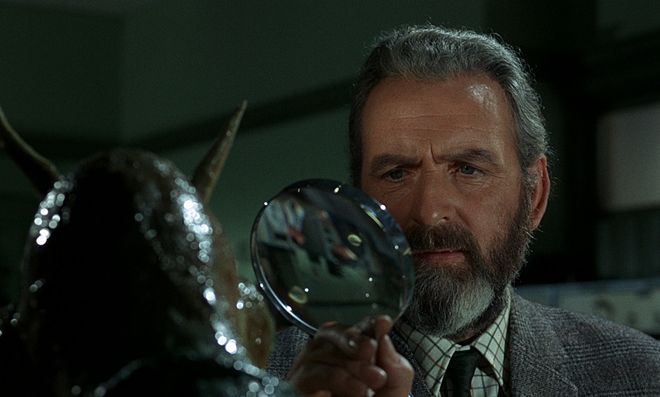
That’s wonderful news about Quatermass. Is there anything you can tell us about the project at the moment? Will it adapt the original Nigel Kneale stories or be brand-new material?
Unfortunately I can’t really say anything about it as there are too many partners involved. But it will be a completely new take, new stories, completely rebooted in a contemporary setting.
So far Hammer has resisted the lure of 3D. But are new filmmaking technologies like that of any interest?
I think you have to find the right project. Personally, I don’t believe in 3D. I think the best example there has been is Gravity, because I don’t believe it’s a story-led drama. It’s just an incredible technical feat by Alfonso Cuarón and by Framestore.
I don’t think you need to do The Woman in Black in 3D. You’ve also got to remember that for every 3D viewer you get, there’s somebody who doesn’t go to the cinema because they don’t want to watch it in 3D. And until there are enough 3D screens in the UK – and there aren’t yet – its economic viability is still up in the air. If you get the right project, sure. If you’re going to do a monster movie for example, then I think it’s probably worth at least investigating the possibility of doing it in 3D. The cost might prohibit it for a while, but now it's coming down the economics make a lot more sense.
Finally, do you have any personal favourites among the classic Hammer movies?
As you can imagine there are quite a few. But I’ve got two real favourites. One is the first Dracula from 1957. The other is a film called Scream of Fear [aka Taste of Fear], one of Hammer’s mini-Hitchcocks from the early ‘60s.
Hammer time again
Here's what the studio has been up to since its re-awakening…
Beyond the Rave (2008)
This 20-part serial was initially published on social network MySpace and follows a group of friends attending a rave that's run by vampires. It was eventually released on DVD in 2010.
Let Me In (2010)
Director Matt Reeves moved from marshalling a city-destroying monster in Cloverfield to a much more intimate type of horror in this English-language remake of the acclaimed Swedish vampire flick, Let the Right One In.
The Resident (2011)
Hammer icon Christopher Lee cameos in this thriller about a single woman (Hilary Swank) who moves to a new apartment, only to find herself the victim of a creepy stalker.
Wake Wood (2011)
Hammer returned to the supernatural with this low-budget shocker that harks back to Don’t Look Now and The Wicker Man with its taboo tale of death and resurrection.
The Woman in Black (2012)
The reborn Hammer’s biggest hit to date is this lavish adaptation of Susan Hill’s celebrated novel, written for the screen by Jane (Kick-Ass) Goldman and starring Daniel (Harry Potter) Radcliffe.
The Quiet Ones (2014)
A college professor sets out to prove that there is no such thing as the supernatural by experimenting on a disturbed young woman. What could possibly go wrong?
The Woman in Black: Angel of Death (2015)
Due to open on February 13, 2015, this eagerly-awaited sequel is set to take place during World War II when a group of school children are evacuated to Eel Marsh House during the Blitz.
 |
Home Cinema Choice #351 is on sale now, featuring: Samsung S95D flagship OLED TV; Ascendo loudspeakers; Pioneer VSA-LX805 AV receiver; UST projector roundup; 2024’s summer movies; Conan 4K; and more
|


